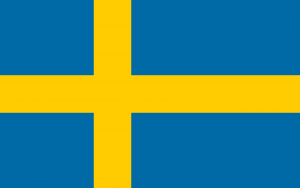Difference between revisions of "Language/Swedish/Vocabulary/Saying-goodbye/cs"
m (Quick edit) |
m (Quick edit) |
||
| Line 66: | Line 66: | ||
<span gpt></span> <span model=gpt-3.5-turbo></span> <span temperature=0.7></span> | <span gpt></span> <span model=gpt-3.5-turbo></span> <span temperature=0.7></span> | ||
==Další lekce== | |||
* [[Language/Swedish/Vocabulary/Greeting-people/cs|0 do A1 kurzu → Abecední seznam → Pozdravování lidí]] | |||
* [[Language/Swedish/Vocabulary/Count-from-1-to-10/cs|Count from 1 to 10]] | |||
{{Swedish-Page-Bottom}} | {{Swedish-Page-Bottom}} | ||
Revision as of 02:00, 6 June 2023
Hej då!
Hej då is the most common way to say goodbye in Swedish. It can be translated as "bye" or "goodbye".
Examples
| Swedish | Pronunciation | Czech |
|---|---|---|
| Hej då | [hej do:] | ahoj |
Other ways to say goodbye
There are other ways to say goodbye in Swedish. Some of them are:
- Adjö: it can be translated as "farewell" or "goodbye". It is more formal than hej då.
- Vi ses: it can be translated as "see you". It is a more informal way to say goodbye.
Examples
| Swedish | Pronunciation | Czech |
|---|---|---|
| Adjö | [ad'jø:] | sbohem |
| Vi ses | [vi: sɛs] | uvidíme se |
Cultural information
Swedes are known for being reserved and polite. They value personal space and privacy. When saying goodbye, it is common to shake hands. If you are in a more informal setting, a hug or a kiss on the cheek might be appropriate.
Practice
Now that you know how to say goodbye in Swedish, try practicing with a friend or a language partner. Use the different ways to say goodbye and see which one feels more natural to you.
Conversation
A: Hej då! B: Adjö! A: Vi ses! B: Vi ses!
Conclusion
Congratulations! You have learned how to say goodbye in Swedish. Keep practicing and don't be afraid to use these phrases in real-life situations.
